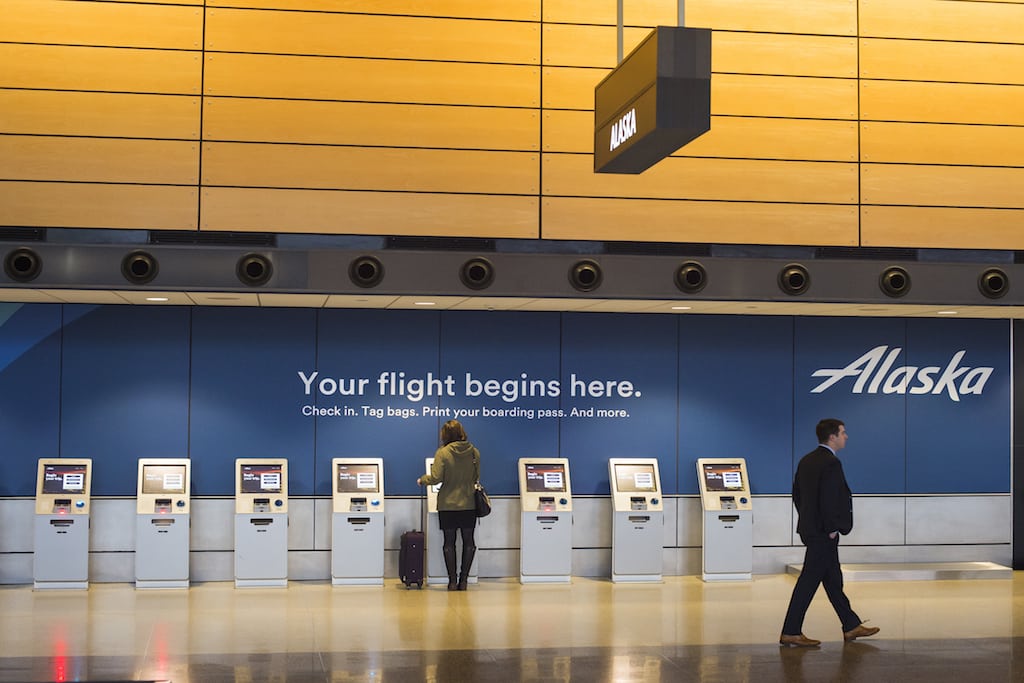Skift Take
Alaska Airlines is turning to basic economy fares to help drive additional revenue. But, hey, at least flyers will be assigned a seat when they book one of these fares, easing some of the stress that usually comes with taking the risk of flying for cheap.
Alaska Airlines will introduce basic economy fares later this year to leverage its increased capacity and better compete against U.S. airlines that have segmented airfares in a race to the bottom.
“We plan to roll out a fare segmentation platform in the late fall, which is essentially Alaska’s response to the industry’s basic economy fares, which are now prevalent,” said Alaska Air Group CEO Brad Tilden on the company’s first quarter 2018 earnings call Monday. The new fare class will be rolled out widely in January, 2019.
Its Saver Fares will follow the traditional basic economy blueprint, available for seats at the rear of an aircraft which will board last. The airline expects the new product to drive $100 million in annual revenue in 2019.
“One thing that is very significantly different: when you book on Alaska Airlines, you get a seat assignment,” said Andrew Harrison, Alaska Air Group’s chief commercial officer. “Today when you book the saver fare, you will get a seat assignment… if you look across the structure of [basic economy overall], our structure is one that meets the middle ground.”
Alaska Airlines exceeded industry estimates for its first quarter 2018 earnings, but faces potential challenges as it continues to integrate Virgin America, which it merged with in December, 2016.
Virgin America is set to disappear on April 25, with all its branding in airports around the country replaced overnight.
Alaska posted reduced year-over-year net income, but executives expect to return to a growth period soon; fuel and maintenance costs have increased as its fleet has grown. Revenue grew 5.3 percent in the first quarter to $1.8 billion.
Still, Alaska Airlines has to deal with the reality that some of its growth plans haven’t worked out, particularly some low-cost long-haul routes it has had to discount due to weak demand. Executives expect growth to even out at around 4 percent in 2019.
“Our platform, which is 33 percent bigger than it was just 16 months ago and 100 percent bigger than it was 5 years ago, maintains the same competitive advantages it always has,” said Tilden. “We maintain an 18 percent cost advantage against the legacy airlines. And if you look at the data, our fares are now, and historically have been, on par with the majority of [low-cost carrier] seats in the market.”
The airline’s loyalty program also beat expectations, as the combined carrier’s offerings seem to be resonating with former Virgin America customers.
“What we’re seeing is the new combined network, our product, our fare structure, everything about us that makes us so strong in the Pacific Northwest, we’re seeing that people in California are seeing that,” said Harrison. “This is just going to continue to get stronger and stronger as we continue to roll out our product.”
The Daily Newsletter
Our daily coverage of the global travel industry. Written by editors and analysts from across Skift’s brands.
Have a confidential tip for Skift? Get in touch
Tags: alaska airlines, earnings, virgin america
Photo credit: A promotional photo of Alaska Airlines check-in kiosks. Alaska Airlines will introduce basic economy fares later this year to better compete in the crowded North American aviation market. Alaska Airlines
